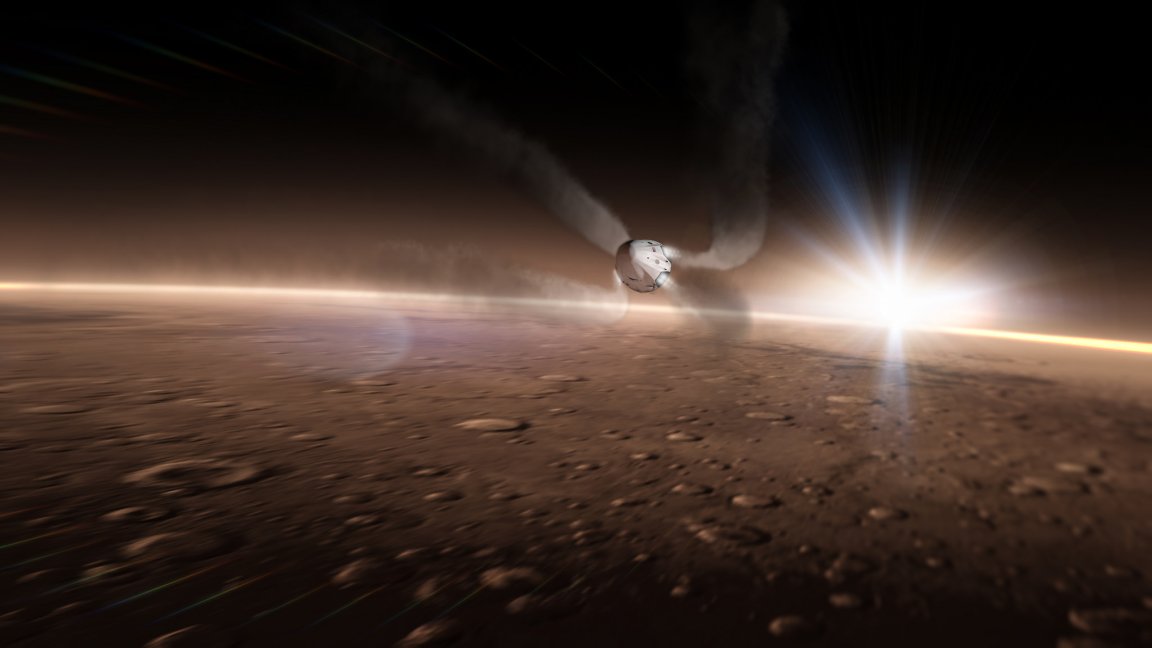
Excitement Down Under
Every year, the who’s who of the space industry gathers at the International Astronautical Congress (IAC) to celebrate all things space-related. The week-long event is essentially the Comic-Con of space exploration, with panels of astronauts replacing the cast of Game of Thrones and talks on off-world colonization filling in for the latest Marvel movie trailer.
This year’s IAC is being held in Adelaide, Australia, and the past few days have delivered their share of excitement.
Panelists have overviewed plans for Moon villages, Bill Nye has detailed the possibilities of solar sailing, and Lockheed Martin has unveiled their potentially game-changing lander. Experts have discussed issues ranging from diversity in the space industry to the importance of inspiring today’s youth to tackle tomorrow’s off-world challenges, and historic milestones in space exploration have received their due celebration.
Still, the most highly anticipated event has been saved for the last day of IAC: a presentation by SpaceX CEO Elon Musk.
The Main Event
At last year’s IAC, Musk unveiled his company’s plans for Mars colonization using the Interplanetary Transport System (ITS), and he has been teasing an update to those plans for months. Just this week, he tweeted that “major improvements” and “unexpected applications” would be unveiled during his presentation at IAC. Could those applications have something to do with plans for a global internet network? Some space-based take on clean energy?
Thankfully, we don’t have to speculate much longer. The day is finally here, and Elon Musk is ready to take the stage. Watch along via the livestream below, and to ensure you don’t miss a single exciting revelation from the SpaceX CEO, we will be updating this article live throughout his presentation.

- Musk starts by reiterating why he believes it’s important that we become a multiplanet species.
- Musk says the most important thing about his presentation is this: “I think we’ve figured out how to pay for [BFR].”
- Key to that is having a single vehicle that can do everything that’s needed in greater Earth orbit activity. “We want to make our current vehicles redundant,” says Musk.
- SpaceX wants to create one craft that replaces Falcon 9, Falcon Heavy, and Dragon.
- The company has been perfecting propulsive landing and now has had 16 consecutive successful landings.
- “We believe the precision is good enough…that we will not need legs.”
- The forthcoming Dragon 2 will directly dock with the space station with zero human intervention.
- Musk notes that today is the ninth anniversary of the first successful SpaceX launch.
- Falcon 9 has 30 times the payload capability of Falcon 1 and includes reuse of the primary booster. Next goal is reuse of the fairing, which will equal 70 to 80 percent reusability for the craft.
- The company is now beginning serious development of BFR. They plan to have a payload of 150 tons to low-Earth orbit.
- BFR stats include a a 48 meter length, a dry mass of 85 tons, and 1,100 tons propellant mass.
- The payload bay of BFR will be eight stories tall.
- The company has added a delta wing with a split flap to the BFR design. This will allow the craft to handle a range of payloads and atmospheric densities.
- The payload area has a pressurized volume of 825 cubic meters, and the Mars transit configuration consists of 40 cabins and large common areas, central storage, galley, and solar storm shelter.
- Fuel tank will hold 240 tons of CH4. The oxygen tank holds 860 tons of liquid O2.
- The engine section consists of six engines: two sea-level engines and four vacuum engines.
- You can land the ship with either one of the two center engines. “We want the landing risk to be as close to zero as possible,” says Musk.
- The launch cost for the BFR (150 ton payload) is less than for the Falcon 1 (.7 ton payload).
- BFR could be used to launch satellites, clean up space debris, or service the ISS.
- The BFR could go to the Moon and back with no local propellant production on the Moon, which would enable the creation of a lunar base.
- “It’s 2017. We should have a lunar base by now,” says Musk.
- With a BFR, you could send a ship to orbit, refill its tanks, and then send it to Mars. You would need to use local resources on Mars to refuel.
- Because Mars has a lower gravity than Earth, we would not need a booster to leave the Red Planet.
- Entry to Mars would be at 7.5 kilometers per second.
- Aspirational timeline: By 2022, land at least two cargo ships on Mars; confirm water resources and identify hazards; and place power, mining, and life support infrastructure for future flights.
- By 2024, send two crew ships to take the first people to Mars, send two cargo ships to bring more equipment and supplies, set up propellant production plant, and build up base to prepare for expansion.
- Musk shares a video detailing what a 39-minute trip from New York to Shanghai would look like via a SpaceX rocket traveling at 27,000 kilometers per hour (18,000 miles per hour).
- “Most of what people would consider long-distance trips would be completed in less than half an hour,” says Musk.
- Musk concludes the presentation with a question: “If we’re building this thing to go to the Moon and Mars, then why not go to other places on Earth as well?”